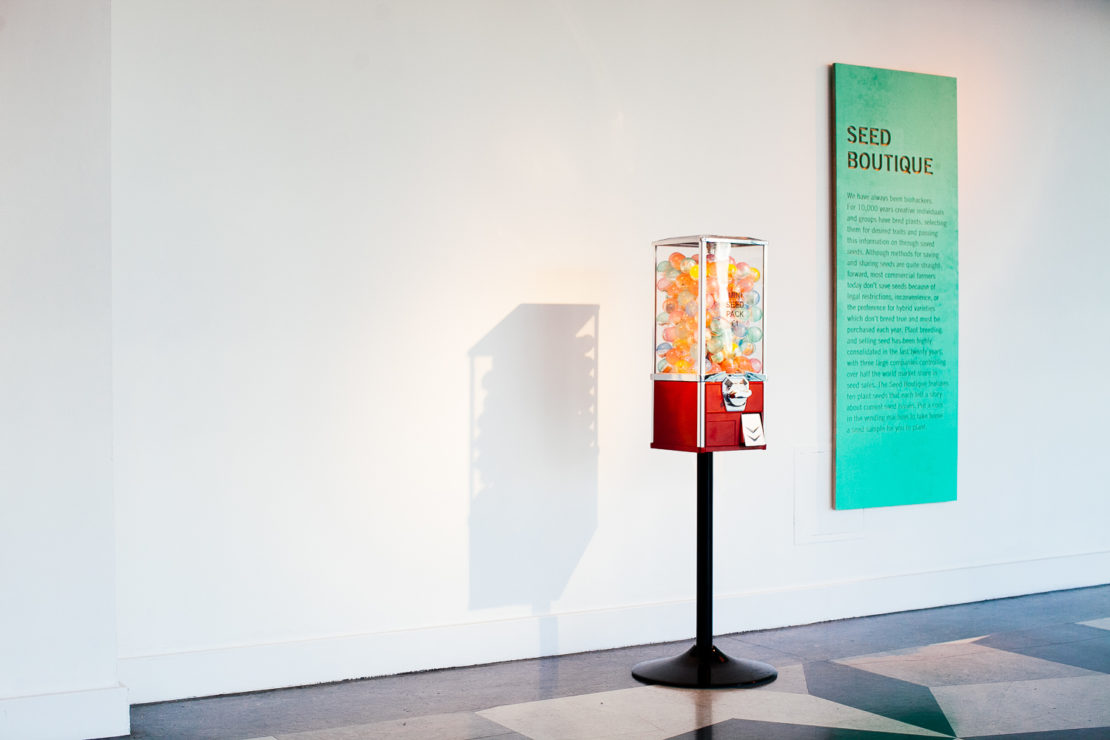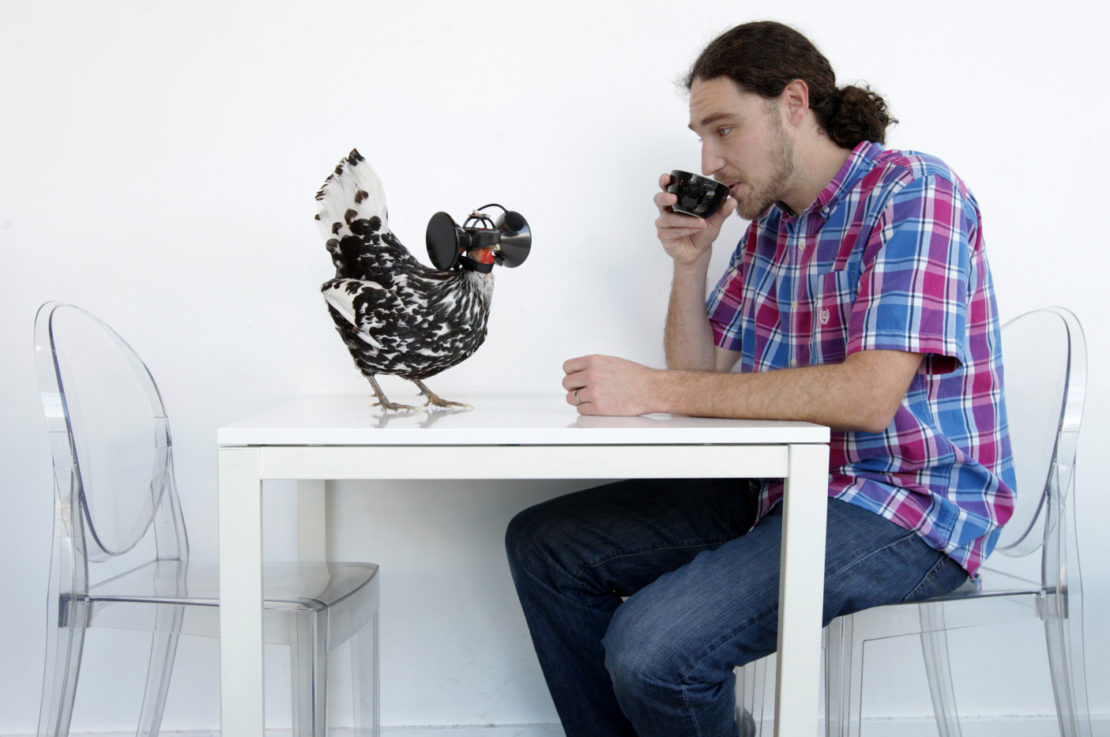Imagining dystopian and delightful new culinary directions

Now in its eighth year at the Naughton Institute at Trinity College, Dublin, the Science Gallery explores the connections between science, art and everyday life. Its latest exhibition, Field Test, falls at the intersection of all three.
Field Test explores what the future of food will look like, and how farming will change to accommodate it. It runs until 5 June, and was curated by the Center for Genomic Gastronomy, a group of Dublin-based artists, designers and researchers dedicated to prototyping "alternative culinary futures", along with Science Gallery director Lynn Scarff.
Even before going through the door of the exhibition you can visit the Loci Lab, a food truck where visitors are prescribed snacks based on "bite-sized bioregionalism". These curious micro-appetisers set the tone for what is to follow: in Field Test the table serves as a canvas for economic, scientific and idealistic themes which are explored in all their hope, pessimism and occasional absurdity.
Many of the exhibits sound too strange and too poetic to be real, and yet they are. We are shown robotic bees from the Harvard School of Engineering and Applied Sciences, health-monitoring 'smart collars' for cows and building bricks grown from living fungus. A scientist has recorded the mating calls of insects, in order to lure further insects to their deaths with 'sonic pesticide'.
Many of the exhibits sound too strange and too poetic to be real: robotic bees, 'smart collars' for cows, building bricks grown from living fungus
Another exhibit, the 'Seed Boutique', showcases a history of biohacking. It includes cross-pollinated antimicrobial lettuce (the first food to be grown and eaten on the International Space Station), the Irish Stormont Cirrus Linseed (guarded by scientists during the 28-month Siege of Leningrad) and the improbably hipster 'flower sprout': a hybrid vegetable grown from Brussels sprout and kale seeds.
The show also welcomes wholly imaginary projects: artist and researcher Austin Stewart riffs on our human dependence on video games and the internet to imagine a similar way of life for free-range chickens. "We consume 40 billion chickens per year," he says. "If we were to treat these animals humanely, would that even be ecologically possible, or would it be disastrous?"

The project takes a satirical look at farming practices as well as humans' virtual lifestyles, by giving a chicken its own virtual world – 'Second Livestock' – to explore using a 'chicken-robot interface'. Safe in its virtual free-range world, the chicken is watched over by floating versions of the Second Life game logo, modified with the comb and beak of a hen. "We live in small boxes," says Stewart, "and we work in small boxes. Could we give chickens the same opportunity?"
On Field Test's launch night, it was the in-vitro meat that stole the show. A pair of exhibits highlight the technology's inherent contradictions – the lengthy, expensive process of the creation of synthetic 'lab meat' today, and its underwhelming result, a desultory slab of greying matter under glass.
I am at @SciGalleryDub examining the lab grown 'million-euro burger' and thinking I'll stick with tofu pic.twitter.com/PtPsJDc6bI
— Roisin Kiberd (@roisinkiberd) March 10, 2016
'Stir Fly' is the creation of Oron Catts and Ionat Zurr of SymbioticA: the Centre of Excellence in Biological Arts. The exhibit mimics a futuristic 'smart kitchen', with a home bioreactor where nutrients, foetal calf serum and antibiotics are drip-fed into a pan containing insect cells. Eventually this will grow into a piece of synthetic meat, while a steady stream of toxic waste drips into a carton under the counter.
Confronting bombastic headlines about the future of food (think Soylent, lab meat and the assertion that we will soon all be snacking on crickets like Bear Grylls), 'Stir Fly' mocks commercial attempts at innovation and all the energy and resources they consume. However sci-fi the 'home lab' set-up may appear, it delivers a dose of harsh reality: we could solve the problems raised by meat production far more easily, by eating less meat.
Catts explains, "I’m credited as the first person in the world to grow and eat a piece of lab-cultured meat, but as a designer and an artist I have no commercial interest in it. I study the relationships that we form with other life forms, and the most intimate relationship we can form with another life form is consuming it and incorporating it into our own bodies." The punchline here is that even after the insect cell meat is grown, its creators will still lack the legal clearance to allow anyone to actually eat it. "My work is really about the idea that the notion of in-vitro meat is actually a symptom, not a solution," Catts says. "It's encouraging this type of over-consumption that brought us to this stage in the first place, which how the neoliberal economy works."
Which may sound grim, but Field Test is every bit as delightful as it is dystopian. The exhibition blends science and art, present and future practices, and, ultimately, dreams and harsh reality. It is highly recommended if you have ever questioned – or felt vaguely guilty about – the ethics and origins of what we eat every day.